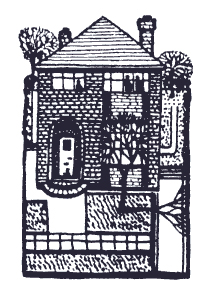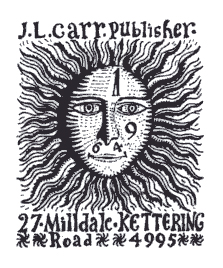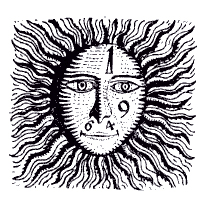Notes on dating Carr's small books
There are a number of ways by which Carr's small books can be dated approximately and then ordered by year of publication.
Dates or dates by association
A few titles are dated, although often not the first edition. For example, later impressions of the first Dictionary of Cricketers and the Dictionary of Queens are dated by a printing history, given inside the cover. But the printing history, if given, was not always sustained in later impressions and may be inconsistent, as four versions of the 8th impression of the first Dictionary of Cricketers published in March 1981 have been found that differ in terms of the printer or the colour of the print, which indicates that they are different impressions. These were probably published after March 1981 and were reprinted from the same printing blocks probably up to the late 1980s, as this was a popular title and always kept in print.
Very occasionally Carr added the date of printing to a new title, such as the only editions of John Dryden and Dante Gabriel Rossetti, on which he has written by hand 'Published 1970' underneath the colophon inside the rear cover. These are exceptional.
Others can be dated indirectly. Carr sometimes stated the number of titles available at a specific date. For example, inside the rear cover of the first edition of George Crabbe he wrote: 'If you collect these books, this is a complete list to January 1977' and then listed 24 titles. So it's reasonable to assume that Crabbe was published in January 1977.
Finally, a few titles were published to coincide with a specific event: the Dictionary of Queens to coincide with Queen Elizabeth II's Jubilee in 1977; The Revolt of 1381 was published in 1981 on the 600th anniversary; and Gidner's Brief Lives was published at the same time as The Battle of Pollocks Crossing in May 1985.
These titles act as way marks to estimate the course of publication and others can be organised around them based on other distinguishing features.
Numbers
Carr applied numbers to his books retrospectively and selectively, after many years of publishing them. For example he applied No.1 to what may be the 8th impression of the title John Clare. Carr stated that this was the first book he published, perhaps to coincide with the 100th anniversary in 1964 of Clare's death, and the ISBN was registered in December 1964, so the honour of number 1 is appropriate. The first edition of John Clare was published by the Northants Campaigner with Carr's home address, without the colophon of the Quince Tree Press. But serial number 2 was not applied to any title, while Andrew Marvell was given number 3. Numbers 4 to 6 were not used, but two small books were numbered 7: the poems of Wilfred Owen and Rupert Brooke and the poems of William Barnes. Carr actually pubished an edition of the poems of Wifred Owen alone, before he published the back-to-back edition with the poems of Rupert Brooke, so that should have been number 7. I suspect that Barnes came before Owen, as Carr was familar with Barnes' vernacular poetry when he lived and taught in Hampshire.
Carr also gave the same serial number to several different titles. For example there are three titles numbered 50 (impressions of Shakespeare (who was in the first 14 titles), Thomas and The Revolt of 1381) and seven numbered 71 (impressions of Chaucer, Donne, Bacon, Johnson, and the Rosettis; picture books by Bewick, Frank and Hassall; and the Little Book of Bookplates). Perhaps these were all issued in 1971, as this is how Carr decided upon the number in the edition of some maps, so the number is not serial, after all?
There are many gaps in serial numbers, if ever that was Carr's intention. A list of numbers recorded so far and the titles to which they were applied, is given here. It may not be complete as not all editions of all titles have been seen.
ISBNs
Carr applied for 100 ISBNs in 1968 and applied them to 54 maps, 35 small books and five of the novels that he reprinted under the name of the Quince Tree Press. ISBNs were only printed on the five novels. Three numbers were applied in 2000 by the Quince Tree Press to three small books, and three numbers seem not to have not been used. Links are provided to tables of the ISBNs by number and by date.
No ISBN has been seen printed on a map or small book published by J.L. Carr, just as the Quince Tree Press is not named, except in the History of the QTP. The Quince Tree Press now applies ISBNs, usually to the rear cover of the small books, which is a distinguishing feature of these reprints and of the new titles they have published.
Printers
In the early small books, Carr usually gave the name of the printer inside the rear cover, at the bottom. This was less common in later books. It's not clear whether Carr used a printer exclusively and then changed; probably not. But there is an approximate order in which he used printers, who are listed in a table with the small books in which each printer is named.
Colophons
Carr's first small books, such as the first edition of John Clare and William Blake, did not have a colophon, but the second impressions and later titles did. The first colophon he used was the sun face dated 1964, the year that Carr published his first small book and three years before he gave up teaching to become a publisher. It has Carr's name as publisher at the top and his address and telephone number, below. Carr usually gave his telephone number in early books, but dropped it in later editions and gave only his address. Later books only used the sun face, probably when the telephone numbers changed to add more digits to create an area code. A few showed only half the sun face, when space was tight.
The alternative colophon depicted Carr's house in Mill Dale Road, Kettering. It shows the quince tree in the front garden and two people in the main bedroom, perhaps Carr and his wife Sally, and a smaller figure, perhaps their son Robert, in the other front bedroom. These colophons are shown below.



House Sun face with address Sun face
Not all small books had a colophon, especially the books of engravings. No colophon used by Carr actually named the Quince Tree Press, and this name was not used in any small book except for the History of the Quince Tree Press (1987).
Staples
Early editions and impressions tend to have one staple; later editions, two. Small books printed by Peter Dawes, all of engravers, are later editions and tend to have one staple. So the distinction is not consistent.
Number of other titles listed
This is one of the most useful means of estimating the order of publication although the list, which is usually given inside the rear cover may have been simply reproduced from one title to the next, without being updated. In some small books additional titles were added by hand underneath a list in type face.
The first titles listed no other small books, such as the first three editions of Clare and the first editions of Marvell, Herrick, Arnold and Tennyson's Lincolnshire Landscape.
The shortest list I have seen is 8 titles, inside the rear cover of the poems of Wilfred Owen and it lists, in alphabetical order: Barnes, Blake, Clare, Herrick, Marvell, Tennyson, Rossetti and Rubaiyat (=Omar Khayyam). The next two titles added to make a list of 10 were Thomas, in the second impression of William Barnes, and Tennyson in the edition entitled Tennyson's Lincolnshire Verse
.
Two small books listed 14 titles and three small books listed 15 titles, which added five more poets: Charles Wesley, Flecker, Stevenson, Arnold and Shakespeare. However the volume of Charles Wesley has not been seen, it is not listed in any library and was never published, according to a letter from Bob Carr of The Quince Tree Press, which presumably has an archive of all books.
The next two added, to make 17 titles, were Donne and Milton, listed in D.G. Rossetti, or Herbert, Donne and Milton, listed in the first edition of William Cowper. So the list of titles was not consistent between volumes, and some were missed.
Nevertheless, the growing list is indicative of more titles having been published. The format changed when Carr had published about 50 titles, probably in the mid 1980s. The second impression of Wilde lists 39 titles which are printed and seven have been added by hand, to make 46 in total. Welbourn's Dictionary lists 39 printed ttles and 10 added by hand. Space was getting tight. To solve this Carr organised the titles into three columns, rather than as a list in approximate order of publication: he listed the books of text first, in alphabetical order, the engravers also in alphabetical order, and then the dictionaries underneath. This arrangement can be seen in the 12th and last impression of the Dictionary of Queens published in 1988 and Edward Lear, which is actually dated May 1988. Not all latter titles had a list: Cruickshank, published in 1991, lists no other titles.
Conclusion
- Date: rare; if there is one, use it, but it might apply to more than one impression;
- Printer: one tends to be named in early titles; Pike and Dalkeith Press are the earliest, followed by Richardson, Central then Smith;
- Number of titles listed: if none are listed, book tends to be early, probably late 1960s; 8-20 titles listed are early 1970's; 21-30 titles listed, late 1970's; 31-50 titles listed early 1980's; >50 titles listed, late 1980's; no titles listed in books of engravers;
- Colophon: sun with address and telephone number tend to be early; the phone number was dropped after the area code was expanded;
- ISBN: never printed on a book published by Carr even though some were assigned a number;
- Name of press: Carr never printed the name Quince Tree Press on any small book except for his History;
- Publisher: if Northants Campaigner or Northants County Association of the N.U.T., then it's one of the earliest publications; most others were published by J.L. Carr, 27 Mill Dale Road, Kettering though some have no address at all, such as the second edition of Sandbach.
Good luck.